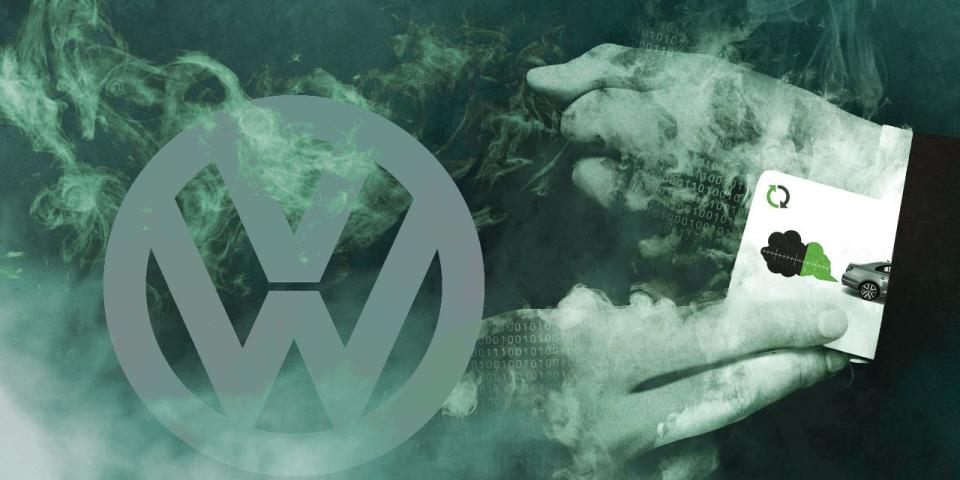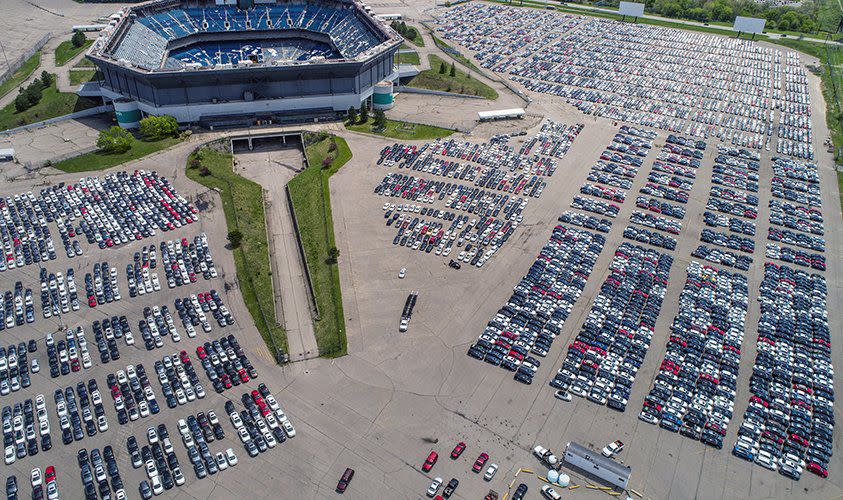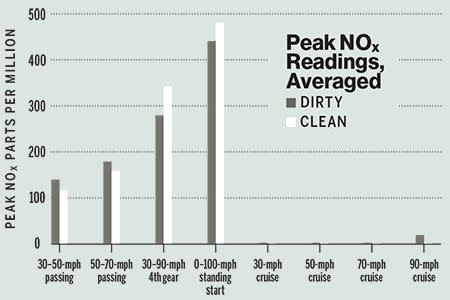The Fix Is In: We Test the Software Update for Cheaty VW TDI Diesels


From the July 2017 issue
Throwing money at problems is how corporations make them go away. Pay for more lawyers, pay for more public relations, and certainly pay for more marketing in the hopes that the world will believe your new promises. For Volkswagen, those invoices have recently been supersized, befitting the scope of the diesel cheating scandal that has engulfed the company and prompted the recall of approximately 590,000 vehicles in the United States.
Yet, its attorney bills and the costs of hiring extra PR staff must seem like little more than a few padded expense reports to the accountants in Wolfsburg. Since a group of West Virginia University scientists announced in May 2014 that they had found unexpectedly high emissions from VW’s TDI vehicles-which led to the uncovering of the company’s conspiracy to cheat government regulators and defraud consumers-Volkswagen has committed to spend at least $25 billion in the U.S. in legal settlements alone.
As the world’s largest car company bleeds, TDI money now begets its own economy [see “TDI Profiteering”]. VW even has had to create a subsidiary called Electrify America to ensure the spending of $2 billion on brand-neutral electric-vehicle infrastructure. Not coincidentally, Volkswagen says that it has quit the “clean diesel” business for good, at least in the U.S., to focus its green efforts on EVs. Except that as of April, the company owns more than 237,000 used diesels acquired through its court-mandated buyback program. And inventories are growing, with 15,000 more vehicles being turned in each week, according to reports. Without the joint blessing of the California Air Resources Board (CARB) and the United States Environmental Protection Agency, these cars are to remain parked in places like the lots that surround the shuttered Pontiac Silverdome, the former Detroit Lions football stadium 30 miles north of Detroit.
That’s where Volkswagen found our test vehicle, a 2015 Passat sold new in Texas and now showing 25,000 miles on its odometer. One of the so-called Gen 3 diesels that clean up waste gases with catalytic converters, particulate filters, and diesel exhaust fluid (DEF), it is among the first batch eligible for a fix-in this case, a software update to both its engine and transmission computers. This is per the emissions-modification proposal that CARB and the EPA approved on January 6, which also covers 2015 Beetles, Golfs, Jettas, and Audi A3s with 2.0-liter TDI engines, some 67,000 total vehicles.

A second phase of the third-gen recall will involve dealers fitting replacements for the entire emissions system, including a new diesel-particulate filter, diesel-oxidation catalyst, and selective catalytic-reduction converter. A second NOx sensor downstream of the catalyst also will be added, allowing the emissions system to operate in an improved, closed-loop mode thanks to another forthcoming software update. These new parts should ensure that the system functions correctly for at least 150,000 miles, and it will be monitored by the EPA and CARB through further testing over the next five years, an extension of the one year VW would normally be required to conduct an In-Use Verification Program of spot-checks of randomly selected customer vehicles.
Owners will benefit from a transferable emissions warranty that is extended to the greater of either 11 years or 162,000 miles from new, or five years or 60,000 miles from the date of the recall service. Volkswagen needs some manufacturing lead time, so the second phase of the recall won’t start until early 2018. But in late March, Volkswagen got the go-ahead for its dealers to resume selling 2015 TDIs equipped with the new software, including some brand-new leftovers. Shortly thereafter, we conducted our testing-with VW’s blessing-seeking to determine whether the fix carried any downsides or performance penalties that might be felt by owners of repaired cars.
Stopwatch Says
Since Volkswagen is legally prohibited from allowing any of these TDI buybacks back on the road until their software has been reflashed, our Passat was delivered with the new software. Subjective driving detected no anomalies in its operation-not that we anticipated finding any. VW is telling owners to expect few to no driving differences outside of improved accelerator response and slightly different shifting behavior on automatic vehicles. Neither fuel economy nor performance should be affected. However, owners are warned of the possibility of up to 14 percent higher consumption of DEF, depending on driving style.
That’s the most appreciable change brought about by the software, which will also have been stripped of the defeat device code that triggered different emissions calibrations for dyno emissions testing and on-road driving. “For the most part, it’s the dosing strategy for DEF” that allows cars with the new software to reduce emissions, says VW senior manager of regulatory affairs Rob Sutschek. No changes were made to other engine operating parameters, he says, specifically naming boost pressure, exhaust-gas recirculation scheduling, fuel-rail pressure, and injection timing. Which would indicate that at least for the third-generation diesels, the main benefit VW gained by cheating was merely stretching the DEF refill interval to coincide with a 10,000-mile oil change.
It’s worth noting that the fixed Gen 3 cars will not, in fact, be certified to the same emissions standards (federal Tier 2 Bin 5 and California LEVIII ULEV125) that they were originally supposed to meet. Rather, the court has created a new standard that resembles the current federal Tier 3 Bin 160, which is less stringent for lower-speed operation but allows fewer NOx emissions at highway speeds. Regardless of which emissions standard the fixed cars now adhere to, the broader environmental concern was the potential impact of junking so many vehicles. As Sutschek says, “The EPA wants these vehicles in service.”
At the proving grounds, we ran a modified version of our typical acceleration test, first with the new software and then again after the car had been reverted back to its “dirty” code by two Volkswagen technicians. (Although they used a laptop plugged into the OBD II port, they stressed that VW dealers and others authorized to upload the new software would use a system that will not allow a car to be reverted to any earlier code.) In both zero-to-60 and quarter-mile tests, we recorded identical results: 9.3 seconds and 17.2 seconds at 82 miles per hour. Extra test equipment in the back seat and a passenger aboard mean these numbers cannot be compared with other C/D test numbers, nor should they be considered absolute. But the comparative fact stands: We found no notable performance differences between the car with its original dirty software and the same car after the fix.
The filler neck for the Passat’s DEF tank is located in the trunk, with the tank extending out of sight such that we were unable to accurately assess DEF consumption during testing. Nor were we able to do much fuel-economy analysis, although according to the Passat’s onboard trip computer there was no significant change during steady-speed cruising after we switched software.
We did employ a portable emissions-measurement system [see “Sniffing Around”] during testing. The data we collected with this device do not directly correspond to any measurements made during federal emissions testing, both because of the nature of the testing equipment and because our flat-out acceleration runs have no analogue in the federal procedure. We saw small amounts of NOx emissions present during steady-speed cruising at 90 mph reduced to zero with the clean software, which seems significant in that it indicates cleaner operation even beyond the speeds at which federal emissions testing is conducted. And of course, the tailpipe sniffer did in fact prove that the same car produced different patterns of NOx emissions depending on the software. Within the limited scope of our testing abilities, we considered this sufficient proof that Volkswagen was not perpetrating any further deception.
C/D Test ResultsDIRTYCLEANAcceleration 0–60 MPH9.3 sec9.3 sec1/4 Mile @ MPH17.2 sec @ 8217.2 sec @ 8230–50 MPH, Top Gear5.0 sec5.0 sec50–70 MPH, Top Gear6.7 sec6.6 sec30–90 MPH, 4th Gear22.3 sec22.8 sec0–100 MPH, Standing Start27.1 sec27.7 sec
More to Come
Volkswagen has also submitted two other proposals covering the rest of the recalled four-cylinder diesels. While company officials would not comment on specifics, some details of the modifications to these cars can be found in the consent decree under which Volkswagen is currently operating.
Engine design for the generation-two TDIs, or 2012–2014 Passats, differs from the third generation’s but still uses DEF to curb emissions, so the fix for those vehicles will likely follow the same path as the 2015 models, relying on greater DEF dosing to lower NOx emissions. All the diesels should eventually get completely new emissions hardware. In fact, this is required by the consent decree for the first-generation TDIs, or 2009–2014 Jettas, 2010–2014 Golfs, 2013–2014 Beetles, and 2010–2013 Audi A3s. These earlier models do not use DEF, however, which makes the fix more challenging. These cars employ a NOx trap that requires periodic purging; this is accomplished by running a rich fuel mixture, which will likely result in reduced fuel economy.
Had Volkswagen been willing to make that trade-off years ago, it might have sold fewer cars, but the consequences of this crisis would surely have been averted. Since the emissions scandal was uncovered, VW’s annual sales in the U.S. have dropped by 21 percent-or nearly 85,000 fewer vehicles in 2016 than in 2013-at a time when the rest of the industry was up 12 percent. This year, however, its sales are showing signs of rebound, with first-quarter numbers up 10 percent. We can only imagine that this first fix, which puts thousands of Volkswagen diesels back into service, will help bolster those numbers. Money can make problems disappear, but it is no substitute for fixing them.
TDI Profiteering
How some savvy wheeler-dealers cashed in on Dieselgate.
As get-rich schemes go, this one was fairly foolproof. All it took was a close reading of the Volkswagen settlement and some capital for a few astute individuals-and, rumor has it, a handful of non-VW dealerships-to cash in on the TDI buyback program, creating a homegrown VW diesel trade that fattened a few pockets. Several months ago, you too could have picked up a used diesel-powered VW for well below book value, then sat on it for a bit before turning it in to VW for the buyback money. Sometimes the payoff would be only a few thousand dollars, but one buyer who got the system wired, and who talked to us only on the condition of anonymity, claims to have made around $20,000 on some vehicles.
The $10 billion buyback and restitution program kicked off in November 2016, part of Volkswagen’s larger $15 billion TDI settlement that also includes fines and environmental remediation. The buyback is meant to put cash in the pockets of aggrieved VW customers. However, it also requires those owners to read and comprehend a fairly arcane system that calculates how much VW will pay for the car plus a second compensation payment, both varying based on model, year, and mileage. This has translated into opportunities for those paying attention, as the amounts work out to well above what these cars would fetch on the open market under normal circumstances.
Our anonymous source, whom we found through a Reddit thread, says he bought scandal-affected VWs and Audis from all over the country, mostly from dealers and auctions, collecting 27 vehicles. “I was the original owner of a 2011 2.0, and that’s what turned me on to it,” he says. “In June of last year, I started reading about the buyback and it looked like a good opportunity, so I borrowed whatever money I could get my hands on and started buying the cars.
“I have more than $400,000 invested, and the profits are variable, but my overall profit margin is going to be between 45 and 50 percent,” he says.
As shady as this might sound, it’s legal according to the Federal Trade Commission. Unless, of course, the buyer lies to the seller about the details of the buyback program to get a lower price. That’s fraud. Our source says he checked with his state’s department of motor vehicles to make sure he is aboveboard with state regulations. Because he’s treating diesel trading like any other investment, a CPA ensures his tax compliance.
Before you cash in your 401(k) to become a TDI flipper, understand that if you’re just learning about this now, you’re too late. Although it’s still possible to buy a TDI and submit a buyback claim before the September 1, 2018, cutoff, the cheap cars are gone, and the money-making days are well over. -Benjamin Preston

Sniffing Around

To reduce the chances of another TDI fiasco, carmakers and government regulators alike have expanded their tailpipe-emissions measurement capabilities, moving out of the lab and onto the road. Gathering real-world insights regarding how cars behave in customer hands has necessitated a new category of tools called portable emissions-measurement systems (PEMS). Some of this gear is cumbersome and expensive, while other units-including the analyzer we borrowed from Infrared Industries for this test-are more wieldy.
The company’s FGA4000XDS PEMS is a nine-pound box containing non-dispersive infrared and electrochemical-cell sensors capable of quantifying concentrations of hydrocarbons, carbon monoxide, carbon dioxide, nitrous oxide, and oxygen in the exhaust stream. It can also display air-fuel ratio and engine rpm when connected to the engine’s ignition system. It is factory calibrated and certified to comply with international standards. After a five-minute warm-up and the insertion of a sample line into the tailpipe, this device is able to quantify the ingredients in practically any exhaust stream. -Don Sherman
('You Might Also Like',)

 Yahoo Autos
Yahoo Autos 